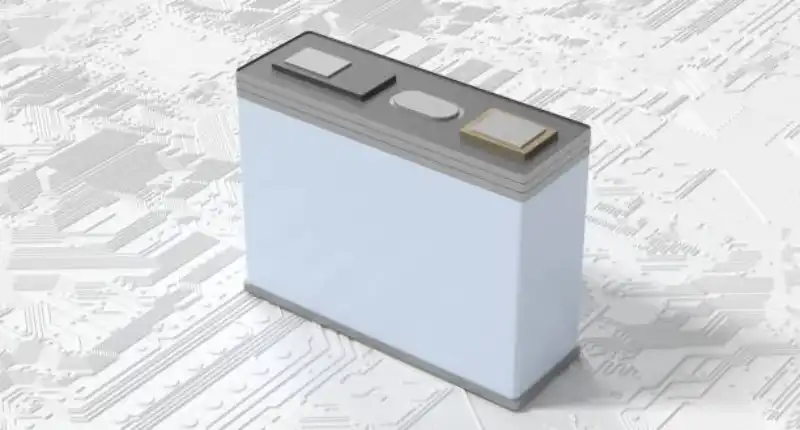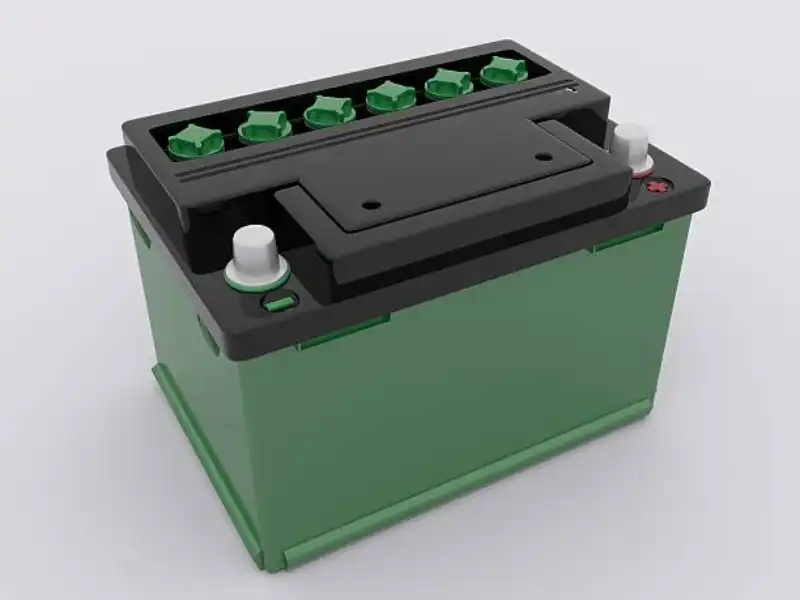Importance of Lithium Batteries
Lithium batteries have become the clear winner for portable power needs in many applications. With high energy density and low weight, lithium offers compelling advantages over legacy battery chemistries like lead-acid. Lithium batteries now power many of our everyday devices – from laptops and mobile phones to golf carts and more. Their high specific power makes them well suited for devices that demand peak performance.
So why has lithium become the battery of choice? First, lithium batteries offer very high energy density (Learn: Energy Density vs Power Density: What’s Their Differences?) , which means they can store a lot of energy in a small, lightweight package. They also have a high specific power, providing a tremendous current output when needed. In comparison, a lead acid battery (learn: What is the Battery Acid PH Level?) with comparable capacity would be much larger and heavier. Though more expensive upfront, lithium batteries save money over the long term by combining a long lifespan with efficient storage capacity in a compact size.
Lithium chemistry also allows batteries to hold a charge for much longer than lead-acid. And they offer high efficiency without any memory effect – frequent charging doesn’t reduce capacity over time. Advanced lithium batteries can withstand hundreds or thousands of discharge cycles, making them extremely reliable. And newer lithium technologies like LFP promise even greater safety and performance.
For portable electronics and electric vehicles, lithium batteries clearly outshine the competition. Their compact dimension, abundant power, and long-lasting performance make these batteries ideal for keeping us connected and productive on the go.

Compare Lithium Battery Chemistries
When selecting a lithium battery, one of the first decisions is which lithium chemistry to choose. The two main options are Lithium Iron Phosphate (LiFePO4) and Lithium Ion/Lithium Polymer (Li-ion).
LiFePO4 batteries
LiFePO4 batteries use iron phosphate as the cathode material. This makes them inherently safe lithium batteries, as iron phosphate is highly stable. LiFePO4 can withstand abuse like short-circuiting and overcharging without damage. It offers a long battery lifespan of 2,000-3,000 cycles. And LiFePO4 batteries have high current ratings for maximum power delivery when needed.
Li-ion batteries
Li-ionbatteries use cobalt and other metal oxides for their cathode. This gives Li-ion the highest energy density rating of lithium chemistries – more capacity in a smaller, lighter battery. Li-ion also charges faster than LiFePO4. But Li-ion is less stable and needs protection from overheating or overcharging. It loses capacity gradually over its lifespan.
For RV, marine, solar storage and other large applications, LiFePO4 is often preferred for its long stable lifespan and safety. For consumer electronics where small size is critical, Li-ion allows slimmer, lightweight battery designs. Here is a comparison table of the two popular lithium battery chemistries:
| Feature | LiFePO4 | Li-ion |
| Energy Density | Good | Excellent |
| Power Rating | High | Moderate |
| Safety | Excellent | Moderate |
| Lifespan | 2,000-3,000 cycles | 500-1,000 cycles |
| Cost | Low | High |
Consider Battery Voltage and Capacity for Your Devices
When selecting a lithium battery pack, two key specifications to consider are voltage and capacity. The voltage needs to match the charging input voltage supported by the devices you plan to power. Capacity determines how long the battery can run those devices before needing a recharge.
For voltage, common portable lithium battery packs come in 12V, 24V, and 48V options. 12V lithium batteries are suitable for many applications like phones, tablets, laptops, LED lights, CCTV cameras, garage door openers, fishfinders, wheelchairs, lawnmowers, etc. 24V or 48V lithium packs can more efficiently run larger devices like RV appliances, power tools, electric bikes, trolling motors, etc.
Make sure to choose a voltage that aligns with your device’s requirements. If the battery voltage doesn’t match, the devices won’t charge properly. For capacity, higher amp-hour (Ah) ratings mean more stored energy. A 100 Ah battery pack holds twice as much power as a 50 Ah pack of the same chemistry and voltage.
Consider the power draw and usage time you need when determining the ideal battery capacity. For occasional phone charging, a 50 Ah unit might suffice. For frequent powering of high drain devices like air conditioners, a 200+ Ah capacity is better. Also, account for usable capacity – lithium batteries only discharge safely to 80-90% of max capacity.
This table provides voltage and capacity pairings for common uses:
| Use Case | Voltage | Capacity Range |
| Phones/Tablets | 12V | 50-100 Ah |
| Laptops | 12V | 150-200 Ah |
| Power Tools | 24V | 150-300 Ah |
| RV Appliances | 12/24V | 100-400 Ah |
| Electric Bikes | 48V | 500-1000 Ah |

Assess Battery Voltage and Capacity Needs
When selecting a lithium battery, take time to assess your device’s voltage and power consumption so you get a pack with suitable specs. Check device manuals to determine the input voltage required. For capacity, estimate your needs based on average daily use.
For example, if you need to charge two laptops and three phones every day while camping, first confirm the voltage. Laptops often use 19V chargers, so a standard 12V lithium battery pack would work with the right DC adapters.
Then estimate power consumption. If laptops require 60Wh each and the phones 30Wh each for a full charge, the total daily consumption is 240Wh. With an estimated 80% usable capacity, you’d want a pack rated for at least 300Wh, or 25Ah at 12V nominal voltage.
For heavy duty applications like powering RV air conditioners, carefully measure power draw in watts and expected runtime to determine the right battery capacity. Always leave a safety margin, getting 20-30% more capacity than your estimates. Voltage mis-matches can damage devices, so double check this. Undersized capacity leads to early power loss.
Properly sizing voltage and capacity ensures your lithium battery can safely and effectively power your devices as needed. Take the time to accurately measure power needs and usage time before purchase. It’s better to have extra capacity than to come up short.
Choose Between Built-In vs External BMS
A key decision when selecting a lithium battery is whether you want a built-in battery management system (BMS) or an external BMS. Both options have pros and cons.
Built-in BMS units are integrated into the battery itself for unified construction. Having the BMS inside the same casing as the lithium cells improves space efficiency. It also allows the BMS to closely monitor individual cell voltage and temperature. Built-in BMS systems are common on many all-in-one lithium batteries.
External BMS units connect externally to the battery via wiring harnesses. This allows using them across different batteries with compatible connectors. External BMS provides more flexibility for custom lithium battery packs assembled from separate cells. They also make it easier to replace a faulty BMS without replacing the entire battery. But external BMS require separate installation and may not monitor cell variances as closely.
For most out-of-the-box lithium batteries like those used for RV, marine, and solar storage applications, integrated BMS are preferred for their simpler design and closer cell monitoring capabilities. But custom lithium packs may benefit more from the flexibility of external BMS that can be swapped out as needed.
When selecting your lithium battery, think about whether you prefer the all-in-one convenience of internal BMS or the incremental customization and serviceability of external units. This helps choose the right management system design for your needs.
Evaluate Safety Features and Thermal Management
Lithium batteries are safe when properly designed, but it’s important to choose a pack with adequate safety protections. Key features to look for include:
- Built-in battery management system (BMS) to prevent overcharging/over-discharging
- Redundant fusing to protect against short circuits
- Circuit isolation to contain failures in individual cells
- High temperature cut-off to shut down when overheating
- Rugged casing to protect cells from crushing or impacts
Advanced lithium batteries will also have good thermal management to prevent overheating. This can include physical cell spacing for cooling, internal temperature sensors, and even liquid cooling systems.
Reputable lithium battery brands design packs to pass key safety certifications like UN38.3 testing. This validates the battery won’t catch fire or explode even under extreme conditions.
While all lithium batteries require careful handling, choosing a properly engineered model minimizes safety risks. High quality safety features and thermal monitoring gives added peace of mind. Don’t compromise safety to save money when purchasing your lithium battery pack.
Check the Depth of Discharge Rating
An important specification to evaluate on any lithium battery pack is its depth of discharge rating. This refers to how much capacity can safely be drawn from the battery during a discharge cycle before recharging is required. A higher depth of discharge rating means more of the battery’s stored energy is accessible for use.
Quality lithium batteries are engineered to allow discharges of 80-90% of rated capacity while maintaining battery life and performance. In comparison, lead acid batteries can only be safely discharged to about 50% before recharging. The deeper discharge capacity of lithium gives much more usable power from each charge.
Checking the depth of discharge specification lets you match the battery capacity needed to your actual power requirements. A 100Ah lithium battery rated for 90% DoD would effectively give 90Ah of usable capacity between charges. This allows for properly sizing the pack for your needs. Don’t opt for undersized batteries with lower discharge depth ratings.
Lithium battery manufacturers determine the optimal depth of discharge ratings based on the battery chemistry and architecture. Going beyond the recommended threshold risks damaging cells and shortening overall lifespan. When in doubt, choose lithium batteries from reputable brands that have qualified the safe discharge limits through extensive testing and data.

Consider Weight and Portability
When selecting a lithium battery pack, be sure to consider its weight and portability. One of the major advantages of lithium battery technology is its much lower weight compared to legacy lead-acid batteries. Lithium packs typically weigh 60-75% less than comparable lead-acid batteries.
This substantial weight reduction is extremely beneficial for mobile applications including marine vessels, RVs, electric bicycles, drones, and any setting where battery weight affects transportation efficiency and handling. By decreasing weight, lithium batteries allow for carrying more usable cargo and equipment. For boating and RVs, lower battery weight improves fuel economy.
The compact size of lithium batteries also enhances portability and installation options. Sleek, low-profile lithium packs can be easily moved around and positioned in tight spaces. This flexibility allows more customization when integrating power systems (learn: Complete Guide to Off Grid Power System Solution). If your application requires regular battery movement and accessibility, prioritize lithium options with good portability.
When comparing lithium battery models, look at both the overall mass and physical dimensions. Some lithium chemistries like LFP naturally have higher density and pack into smaller volumes. High quality casings add ruggedness without excess size or weight. By evaluating lithium battery weight and portability upfront, you can maximize mobility.
Related Articles: How Much Does a Marine Battery Weigh?
Compare Battery Cycle Life and Lifespan
When selecting a lithium battery, pay close attention to its rated cycle life and overall lifespan. Cycle life refers to the number of charge/discharge cycles the battery can perform before capacity degrades to 80% of the original rating. Higher cycle life equals better battery longevity.
Quality lithium batteries are engineered for 2,000 to 5,000+ cycles, depending on the exact chemistry and build quality. In contrast, lead-acid batteries only achieve around 500 cycles before replacement is needed. The longer cycle life of lithium batteries directly translates to a better return on investment over time.
Also look at overall lifespan estimates which account for additional aging factors beyond just cycle degradation. Well built lithium packs can provide optimal performance for 5-10 years in typical usage conditions. Reduced lifespan not only requires more frequent battery replacement but also means capacity can start fading much sooner.
When evaluating lithium battery cycle ratings and lifespan, read the fine print. Check testing conditions to ensure comparable results between brands. Also account for the depth of discharge – using less than full capacity extends the cycle count.
By maximizing both cycle performance and calendar lifespan, high quality lithium batteries reduce the total cost of ownership while maintaining smooth power delivery for years on end.
Look for Fast Charging Capabilities
One prime advantage of advanced lithium batteries is faster recharging capabilities compared to lead-acid. When selecting a lithium pack, look for batteries that support rapid charging. This allows restoring your battery to 80% capacity or higher in around an hour or less when using appropriate chargers.
Faster charging minimizes downtime when you need to refuel your lithium battery bank. High-amperage chargers can deliver 300+ amps to capable lithium batteries for a quick turnaround. While all lithium chemistries allow rapid charging, some formulations like LTO (lithium titanium oxide) excel at fast charge acceptance.
However, sufficient safeguards have to be built in to avoid damage when charging rapidly. Quality batteries will have a battery management system to monitor voltage and current. Thermal sensors help avoid overheating, and redundant fusing adds protection. Advanced packs may even have liquid or forced air cooling.
For marine, RV, and outdoor needs, rapid charging lets users get back to operation quickly rather than waiting overnight. Just be sure your lithium battery and charging system are properly matched to handle the increased current levels. With the right specs, fast charging lithium batteries keep applications moving.
Choose the Right Charger for Optimal Performance
To maximize lithium battery performance and lifespan, it’s critical to use the proper charger matched to that specific battery’s requirements. Never use an incompatible charger – this risks permanent damage.
Quality lithium battery manufacturers recommend optimal chargers designed for the pack’s unique chemistry, capacity, voltage, and charging protocols. Chargers deliver the required voltage levels and charging current while avoiding damage from overcharging. Advanced lithium chargers communicate directly with the battery’s built-in BMS.
Key factors that determine ideal charger fit include:
- Charging voltage – Must match battery nominal voltage whether 12V, 24V, 48V etc.
- Charging amperage – Appropriate current for battery capacity. Too little charges slowly, too much overheats.
- Charging cycles – Custom lithium charging protocols differ from lead-acid.
- Temperature monitoring – Prevents damage if the battery overheats.
- Safety cutoffs – Stop charging if voltage or current spikes.
While aftermarket lithium battery chargers exist, they may not provide an optimized match. It’s best to follow manufacturer guidelines for charger selection whenever possible for maximum efficiency and safety. This ensures you reap the full benefits of fast charging times while maintaining a long overall battery lifespan.
Understand Temperature Ratings and Performance
Lithium batteries perform best at moderate room temperatures, with performance declining in temperature extremes. When selecting a battery, understand its operational specs.
In hot conditions, lithium batteries may need to lower charging rates and apply cooling to avoid overheating. At freezing temperatures, available charging and discharging capacity can drop substantially. Extreme cold temperatures can disable lithium batteries – always check minimum operating temps.
Some lithium batteries include internal heating elements and insulation to maintain function in cold weather applications like marine engines or winter sports vehicles. Without temperature controls, lithium capacity may suffer in cold conditions.
Also consider battery storage temperatures if not actively in use. Storing lithium packs at the hottest and coldest ends of their rating range will shorten the overall lifespan. For optimal life, maintain pack temperatures between around 60-80°F when possible.
While lithium batteries boast advantages (learn: What Are The Advantages of HT Lithium Batteries) over lead-acid counterparts, their performance is still constrained by thermal operating limits. Understand these specifications before purchase and account for the environmental temperatures your application faces.
Check for Certifications Like UL
When evaluating lithium battery packs, be sure to verify certifications from safety organizations like UL (Underwriters Laboratories). Legitimate manufacturers submit batteries for rigorous independent testing.
UL certification means the battery design meets stringent standards for materials, performance, manufacture quality, voltage/current safety cutoffs, environmental endurance, mechanical shock and crush resistance, and other attributes. Bypassing safety certifications risks shoddy electrical and construction standards.
Beyond UL, recognized batteries also carry UN DOT 38.3 certification for managing hazardous materials, UN ECE R100 for voltage safety, and IEC 62619/62620 for reliability. Don’t compromise safety – only choose lithium batteries (learn: How to Choose Lithium RV Battery [Detailed Steps]) displaying respected safety organization certifications.
Reputable marine and RV lithium battery makers adhere to American Boat and Yacht Council (ABYC) and RV Industry Association guidelines. Batteries should also pass UN Manual Tests covering vibration, thermal shock, and other stresses.
While certification labels don’t guarantee flawless quality, they provide assurance of independent safety testing. Combined with manufacturer reputation and warranties, certifications help identify lithium batteries (learn: A Complete Guide to What is BMS for Lithium Ion Battery) engineered for safe, long-lasting service.
Consider Brand Reputation and Warranty
When purchasing a major investment like a lithium battery pack, the brand reputation and warranty coverage add confidence to your decision. Established manufacturers with years of experience typically offer the best assurances.
Look for lithium battery companies with proven track records in their targeted market – whether RV, marine, or other segments. Check owner reviews and community feedback on real-world reliability and performance. Also verify the warranty periods – quality batteries often come with 5-year or even 10-year warranties backing manufacturer defects.
While startups or lesser known brands may offer cheaper battery packs, the risks increase if they lack sufficient testing and field data. With unproven lifespans and cycle counts, premature failure becomes more likely.
Sticking with respected lithium battery makers with strong warranties provides financial protection if issues emerge. Reputable brands also typically have better support channels to promptly handle any problems and back their products.
For lithium batteries powering vital systems or appliances, proven reliability is worth the premium cost. Weigh brand reputation and warranty terms as you assess options to make the best choice.
Optimize Your Battery: Care and Maintenance Tips
To get the most lifespan and performance from your lithium battery, proper maintenance is key. Here are some tips:
- Avoid fully discharging – only use a minimum of 20% charge whenever possible. Full discharges put more strain on lithium cells.
- Don’t leave batteries at maximum charge for extended periods. Store around 50% charge if not being used.
- Don’t be exposed to high temperatures for a long time, which accelerates aging.
- Clean terminals regularly to avoid buildup and corrosion.
- Check water/electrolyte levels in flooded lead-acid batteries.
- Equalize lead-acid batteries periodically by fully charging to normalize cells.
- Watch for bulging or damage to the casing that can indicate a bad cell.
- Check and re-torque terminal connections as needed to maintain tight physical contacts.
- Consider battery monitoring systems to track usage and cell balance.
- Follow charging guidelines and use the recommended charger for that battery. Over or under-charging reduces lifespan.
With proper care, high quality lithium batteries can retain over 80% of original capacity (learn: What Is Good About HDN Lithium Battery?) after thousands of cycles. Some basic maintenance helps optimize battery health and longevity.
Solutions for RV, Marine, Outdoor Recreation Uses
Lithium batteries are a game changer for RVs, boats, and outdoor enthusiasts who rely on portable power. Some key advantages include:
- Huge weight savings – lithium packs weigh up to 4x less than comparable lead-acid batteries. This lightens the load for vehicles and boats.
- Faster charging – lithium batteries can be recharged to 80% capacity in under an hour with proper high-amperage chargers. No more multi-hour waits for a charge.
- Improved cold weather performance – lithium maintains better discharge capacity in cold temps versus lead-acid.
- Increased lifespan – lithium batteries can achieve 2,000-3,000 cycles versus 500 for lead-acid. Greatly reduced replacement costs over the years.
- Better aesthetics – low profile lithium packs allow flexible mounting options.
- Enhanced safety – no acid spills or dangerous fumes. Reduced fire risk with proper BMS.
Many RV and marine lithium batteries (learn: Marine Battery vs Car Battery: A Comprehensive Comparison Guide) include advanced monitoring and management systems to maximize each cell’s life and performance. Look for batteries that integrate with your existing electrical system and can be mounted securely.
For outdoor recreation like camping or festivals, small portable lithium power stations provide renewable power anywhere. Top brands boast outputs from 500W to over 2000W, capable of charging phones, running mini-fridges, powering medical devices, and more off-grid.
Lithium battery technology tackles power challenges for life on the move. Rugged, sustainable lithium packs keep RVs, boats, and outdoor gear powered up in the most remote locations.

What Budgeting Factors Should be Considered?
When purchasing a lithium battery, it’s important to consider long-term value for money, not just upfront costs. Key factors to weigh include:
- Upfront cost – Lithium batteries (learn: What Is A Good Lithium Light EV Battery) cost more initially than lead-acid. But the higher initial investment pays off over time.
- Lifespan – A lithium battery can achieve 3-10 times more lifetime charge cycles than lead-acid. The longer lifespan saves money on fewer replacements.
- Weight savings – Lighter lithium packs allow RVs, boats, and vehicles to transport more cargo and improve fuel efficiency through reduced weight. This provides ongoing savings on fuel.
- Efficiency – Lithium batteries maintain optimal charge capacity even after thousands of cycles. Lead-acid capacity degrades more rapidly. Less wasted energy translates to better value.
- Disposal/Recycling – Lithium cells can be recycled. Lead-acid batteries require hazardous waste disposal fees.
- Performance – Lithium’s faster charging, cold weather tolerance, and steady power output allow users to get more done. This performance boost also indirectly adds value.
While still a significant investment, a quality lithium battery can save thousands of dollars over a 10-year lifespan compared to repeated lead-acid purchases. And the performance benefits enhance productivity and capability. By weighing long-term value against upfront cost, lithium batteries make sense for those with serious power needs.
Conclusion
When selecting the best lithium battery for RV, marine, portable electronics, electric vehicles, or other applications, you want the optimal lithium-ion or lithium iron phosphate pack with good longevity, safety, power delivery, and charging performance.
Key factors to consider include matching the battery voltage and capacity to your devices’ needs, choosing stable and safe lithium chemistries like LFP, evaluating battery management systems, looking for safety certifications, understanding cycle life ratings, considering the maximum depth of discharge, and finding reputable brands.
By investing time to understand lithium battery specs and features, you can choose high-quality lithium packs that will provide abundant energy, smooth voltage output, fast recharging, and reliable portable power delivery across thousands of lifespan cycles.
As lithium battery technology keeps advancing, we can expect continued innovation in cathode, anode, and electrolyte materials that will further boost energy density, lifespan, charging speed, safety, and performance. Lithium has clearly become the battery of choice for powering our increasingly electric, mobile world far into the future.
If you want to purchase batteries, Polinovel is a good option. Polinovel provides a range of batteries used in homes, communication bases, factories, mobile energy storage stations, medium-scale commercial power stations, vehicle and boat energy storage, and many other fields.

